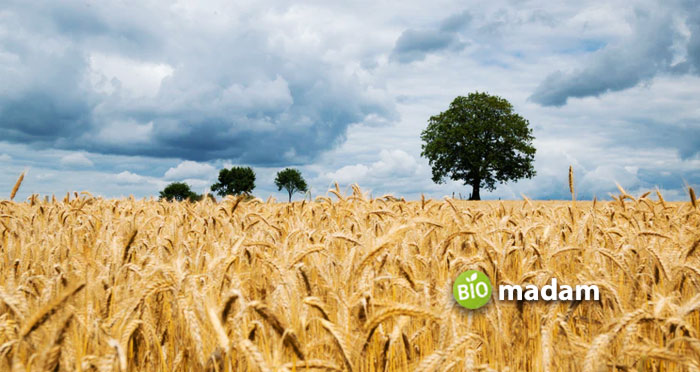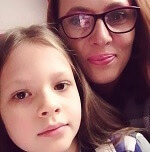Recently updated on October 5th, 2023 at 09:23 am
We humans have added many beneficial crops to our daily lives for ages, including wheat and barley. These are a good source of complex carbs and fibers, being low in fats. Different studies have linked eating whole grains with a reduced risk of heart diseases, diabetes, and certain cancer types, except for those prone to gluten. Wheat and barley are a far better choice of eating than refined or enriched grains.
Both of them look pretty similar to each other but are entirely different. So, today we will go through the difference between wheat and barley to provide you with complete information.
What is Wheat?
It is the main cereal crop, standing in the list of food with maize and barley. Wheat is widely consumed as a primary source of protein and is used for livestock feed in temperate countries. Contributions partly depend on its adaptability and high yield potential. Also, the fraction of the gluten protein conferred by the viscoelastic properties allows dough processing into bread, pasta, noodles, and other foodstuffs. Wheat contains a healthy amount of essential proteins, minerals, vitamins, and beneficial dietary fibers. Some of our favorite eating items consist of wheat, for example, pasta, cakes, cookies, noodles, etc.
A smart way of eating wheat is often in its processed form (bleached white flour). Unfortunately, this method can remove up to 40 % of the original grain, such as the bran, and germ with the most nutrients.
What is Barley?
While wheat-based products are the best in maintaining all nutrients, barley is a member of the grass family; a significant grain developed globally in temperate climates. It was one of the first grains to be cultivated, particularly in Eurasia 10,000 years ago. Today, barley is the world’s fourth-largest seed crop, after wheat, rice, and corn. It contains a rich amount of fats, carbs, proteins, multivitamins, dietary fibers, and minerals, hence, widely consumed by humans and animals. Humans process it in food industries to form slices of bread, soups, stews, alcoholic beverages, and health items.
Due to being rich in dietary fibers and healthy fats, doctors recommend taking barley to reduce weight. Moreover, it is free from gluten, an elastic protein; hence it doesn’t create any brittle loaf of bread. Besides, barley flour also helps make porridge, particularly a staple food grain in North Africa and Asia.
Wheat vs Barley – Detailed Comparison
Health Benefits
These cereals are an essential group of family grass, often called the fruits of grass similar to sugarcane, rice, etc. Wheat and barley naturally have outer and inner protective shells called bran and germ.
Wheat
Consuming a whole grain of wheat means enriching yourself with essential nutrients. Examples include phosphorous, copper, selenium, folate, manganese, calcium, and vitamins.
Barley
On the contrary, eating barley means consuming food enriched with vitamins, minerals, and antioxidants. Other minor nutrients are dietary fibers, selenium, magnesium, phosphorous, chromium, niacin, and manganese.
The Difference in Nutrition (100 grams)
Wheat
A 100 grams of whole wheat flour provides almost 340 calories, including several B vitamins and other essential minerals, healthy for us. The other nutrient content is as follow:
- Carbohydrates – 72 grams
- Proteins – 13.2 grams
- Fats – 2.5 grams
- Fibers – 10.7 grams
Barley
Similarly, 100 grams of hulled barley includes 354 calories with sufficient minerals and vitamins. The other nutrient content is as follow:
- Carbohydrates – 73.4 grams
- Proteins – 12.5 grams
- Fats – 2.3 grams
- Fibers – 17.3 grams
- Sodium – 12 mg
- Potassium – 452 mg
Growing Season & Availability
Wheat
Wheat is one of the widely consumed cereals worldwide and is grown in winters (cooler season).
Barley
On the other hand, barley might not be available everywhere but is the fourth most-grown food. People of India usually consume this food, and it is grown on hot days.
Uses
Wheat
Nowadays, wheat is widely consumed by humans in processed or raw forms. We make slices of bread, biscuits, cakes, cookies, and other such baking items with processed wheat. Moreover, it helps in fermenting alcohol to make beer and similar other beverages. Besides, underdone wheat is used to create malt.
Barley
On the contrary, barley is one of the main ingredients used to produce beer and other alcoholic drinks. People directly use this cereal for cooking instant rice, noodles, congee, etc. Last but not least, barley helps in making porridge, barley water, and also gruel.
Does Barley Have no or Less Gluten Than Wheat?

Gluten is a group of proteins that act as an adhesive to help foods maintain their structure. It causes slight intestine inflammation in some people, and the condition is called celiac disease. Individuals who have no celiac disease but still have symptoms after eating gluten may react to non-celiac gluten. Barley has almost 5 to 8% of gluten present, so people with celiac disease or sensitivity to non-celiac gluten should not eat it.
Is Wheat Good for Health?
Certain refined wheat products like pasta are less efficiently digested and thus do not raise the blood sugar levels to the same degree. Most wheat fiber is insoluble, passing nearly intact through your digestive system and adding bulk to stool. Some fibers also feed bacteria in your gut.
Furthermore, wheat produces small amounts of soluble fibers that may trigger digestive symptoms in people with irritable bowel syndrome (IBS). Nevertheless, wheat bran may have beneficial effects on the health of the stomach, in general.

Gluten is a large protein family responsible for up to 80% of the total protein content. The properties of wheat dough’s unique elasticity and stickiness make it so valuable for bread making. Wheat gluten may have adverse effects on the health of people with gluten sensitivity.
Whole wheat is a good source of proteins, vitamins and minerals. Some of the grain’s most nutritious parts, the bran and the germ are absent from white wheat because they are removed during milling and refining. White wheat, therefore in many vitamins and minerals, is relatively poor compared to whole grain wheat.
Is Barley Healthy to Eat?
Barley has a low glycemic index (GI), a measure of how fast a food raises blood sugar. Barley helps to lower blood sugar and insulin levels, which can reduce your diabetes risk
Whole-grain barley is a vital fiber source, including the soluble fiber beta-glucan, which delays sugar absorption by binding it in your digestive tract. A study of 10 healthy men found that those eating barley at dinner have 30% higher insulin sensitivity after breakfast the following morning than those who ate refined wheat bread with dinner.

Furthermore, barley may help in constipation relief, just like any other food such as banana. Dietary fiber raises the bulk of your stool, making the movement across your digestive tract smoother. It has been shown that barley improves the effects of ulcerative colitis, an inflammatory bowel disease. Besides, it can also encourage good bacteria to grow within your digestive tract. The beta-glucan fiber in barley can help feed healthy intestinal bacteria and increase their probiotic activity.
Barley can influence hunger and fullness by decreasing ghrelin levels, a hormone responsible for hunger feelings. Many studies have shown that barley intake can have beneficial effects on cholesterol. A diet high in soluble fiber containing barley reduced total cholesterol and “bad” LDL cholesterol by 5-10%.

Meet me; I am Paulina Zaniewska, who’s more hooked on providing the best health blog. I’ve always been so determined to compete as a nutritionist, and here I am, done with a Master’s in food technology. My brilliant performance throughout encouraged me to help people.

